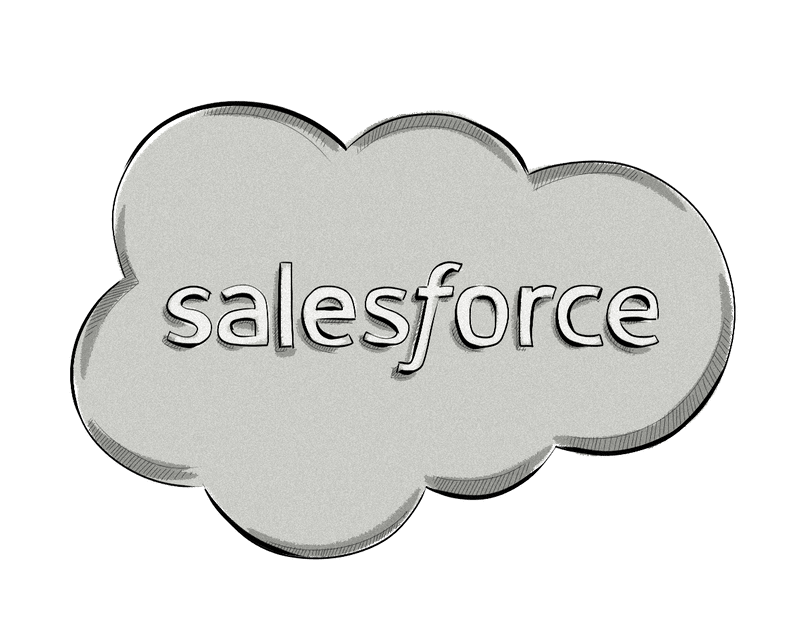Salesforce – with its cloud-based sales automation software – has changed the face of sales.
The dark art of selling – with its mysterious mixture of persuasion, psychology and personal engagement is in the process of becoming more data-driven than ever.
That’s why Salesforce is the main choice of companies, both B2B and B2C, for handling leads, tracking customer value, sales-client interactions, all of which makes it one of – if not the – leading platform for sales management in business today.
Of course, that’s good for Salesforce – but it’s also great news for AdTech and MarTech companies who are looking to build a new platform.
Why?
Because integrating with Salesforce is an easy way to add value to your tool and make it more attractive to users.
Here are three reasons users want (and need) their AdTech/MarTech tools to be integrated with Salesforce’s software and why Salesforce development is one of the keys to making new platforms truly useful.
1. All Roads Lead to Sales
The AdTech and MarTech space is one of the most innovative areas of technology today. New developments spring up all the time.
But when it comes right down to it, they all exist for one reason: to bring customers to the point of making a purchase.
In other words, the promised land at the end of the road is sales.
It only makes sense, therefore, that advertising and marketing tools would be integrated with Salesforce solutions.
Whether your platform is geared for lead management, marketing automation, campaign optimization or any other part of the customer journey, it will inevitably be more useful when connected to the tool that users’ sales team rely on at the end of the funnel.
2. Users Want Easy Workflows
Not all the data flow in advertising and marketing technology is one-way.
So while information about a white paper download might need to be transferred to a Salesforce lead profile, the email exchange between a sales rep and that potential customer is also valuable data that can enrich a marketers next automated email campaign and help make it more personalized.
This is just one example of the way marketing and sales teams must work together. But there are plenty more:
- creating and sharing email lists
- filtering promotional campaign audiences by transactional data
- collecting and analyzing online surveys
With integration with CRM tools like Salesforce, marketers (and sales teams) would be forced to spend hours upon hours grappling with data manually, sending it back and forth and generally wasting time and energy.
2. Data Integration Is King
Beyond the streamlining of work between teams, building on top of Salesforce meets a basic need in AdTech and MarTech today.
Better utilization of first-party data.
Targeting potential customers based on 3rd-party segments may be great to boost campaigns’ lift and reach – but the data they are based on may or may not be very accurate.
Brands know that a far better option is onboarding their own data and maximizing its potential when utilizing AdTech and MarTech tools.
In fact recent studies indicate that the market for data onboarding (combining offline and online data) could reach $1 billion by 2020.
With this much emphasis on data integration, plugging into a powerful system such as Salesforce makes perfect sense.
Example Salesforce Integration for AdTech/MarTech Tools
Opportunities to build on top of Salesforce are almost endless – given the wide range of services that it offers, but here are just a few of the ways 3rd-party AdTech and MarTech tools could be integrated.
1. Content personalization solutions
With so many of the AdTech and MarTech tools on the market today focusing on the need to create more personalized customer experiences, it’s no wonder that brands want to be able to hone in on prospects and serve promotions, offers and valuable content that matches the needs and desires of individuals, instead of large swaths of potential customers.
Content personalization solutions can take different forms: on-site suggested content/products, email nurturing campaigns, retargeting campaigns on 3rd-party websites. But each one can benefit from being able to integrate with the data from Salesforce’s CRM tools.
Notes on interactions between sales teams and prospects, survey results, even data from Salesforce’s IoT cloud can all be critical in delivering just the thing a person may want or need to see.
2. Data visualization tools
Data is at the heart of what marketers and advertisers do these days. But with so much data to choose from, there comes the need to present it clearly and make it easy to share – both internally and sometimes externally.
When building a tool that helps users combine and present complex data from multiple sources, there’s no doubt that adding Salesforce information is critical as well. Management teams can have all the information they need about sales, customer service, marketing performance and more – right at their fingertips.
3. Real-time media buying
The real power of integrated data (as mentioned above) is revealed when it comes time to spend money on digital advertising. No one likes to waste money on ads that don’t bring results – which is why connecting 1st-party data from a powerful tool like Salesforce can be infinitely valuable for brands.
One tool that can benefit from Salesforce integration is a data management platform (DMP) which allows advertisers to audience dynamically segment data to buy target ad campaigns on programmatic media-buying tools.
Not only can they personalize their ad content to better match customer needs, but also better choose when and where to target customers based on their knowledge of likes/dislikes and previous buying behavior. With Salesforce data about customer satisfaction, brands can also boost retention by targeting dissatisfied or inactive customers with special offers.
DMPs often work in close conjunction with demand-side platforms (DSPs) for buying digital ad space – and often work all in one. Here again, connecting with Salesforce provides even more added value as the flow from sales to marketing to customers and back again becomes more integrated.








